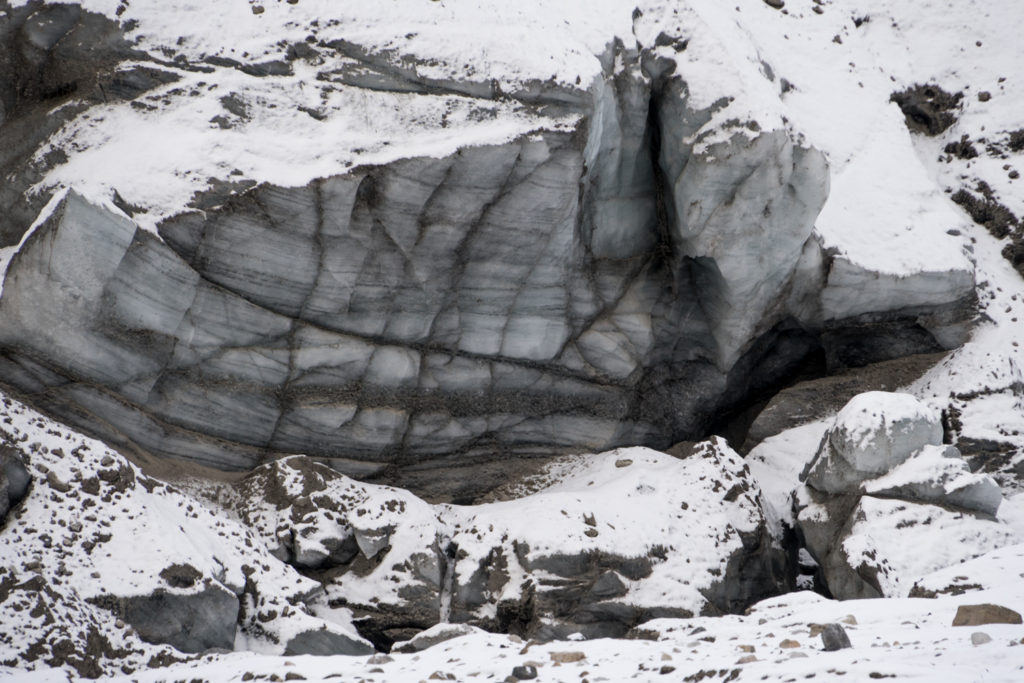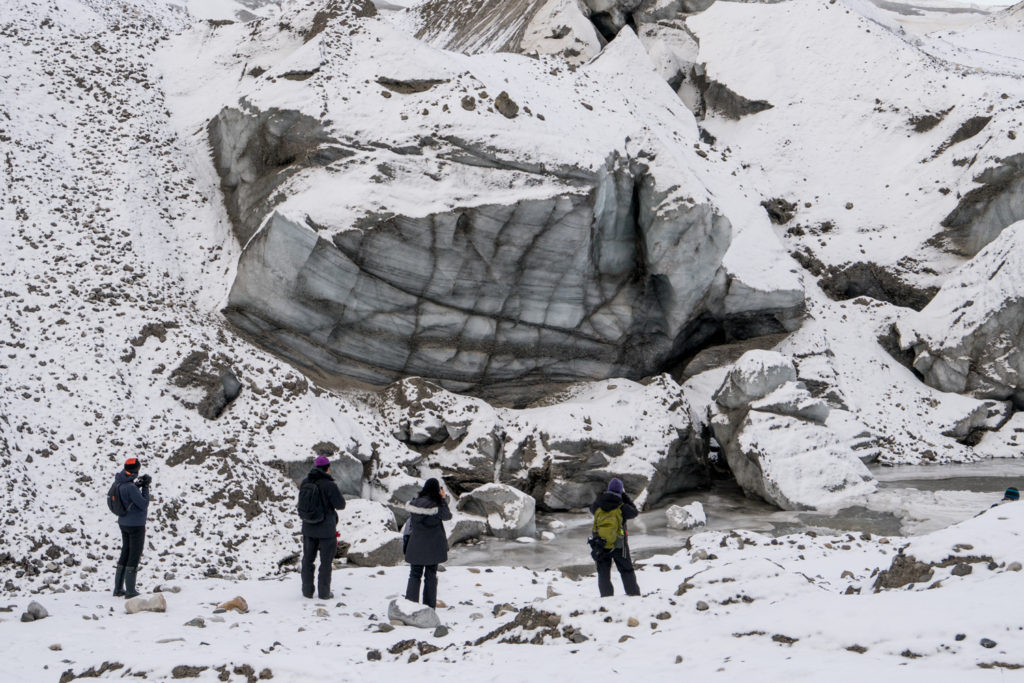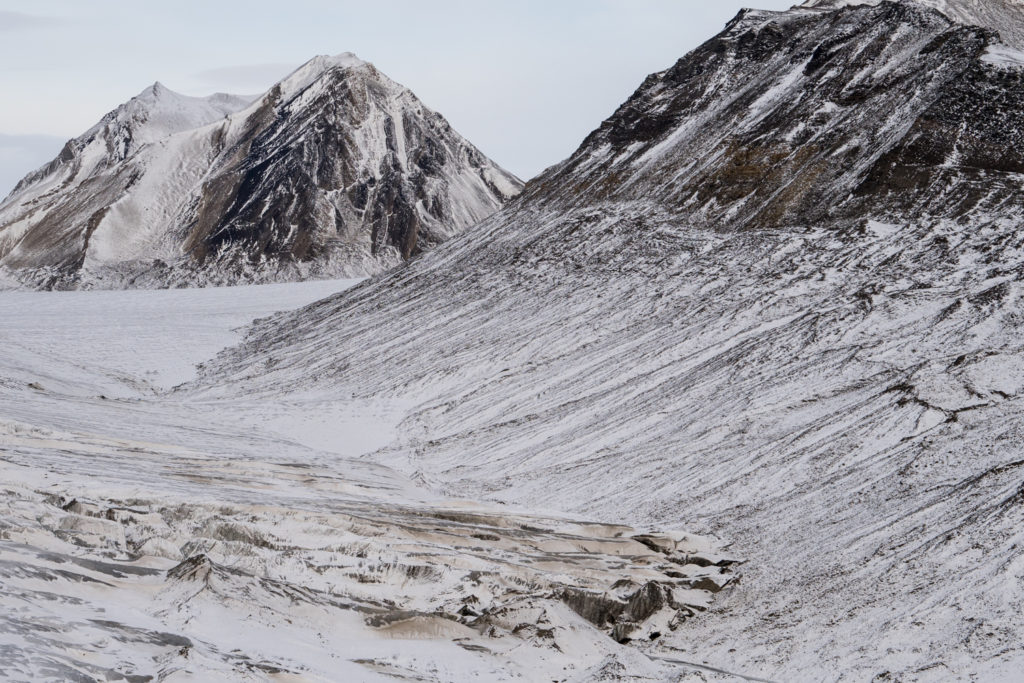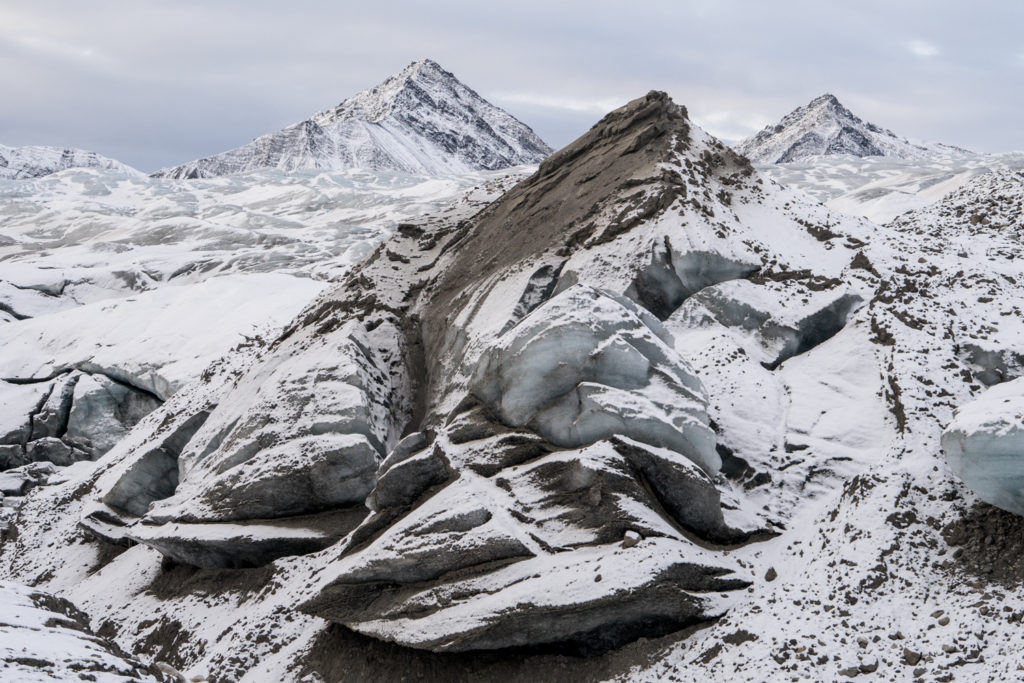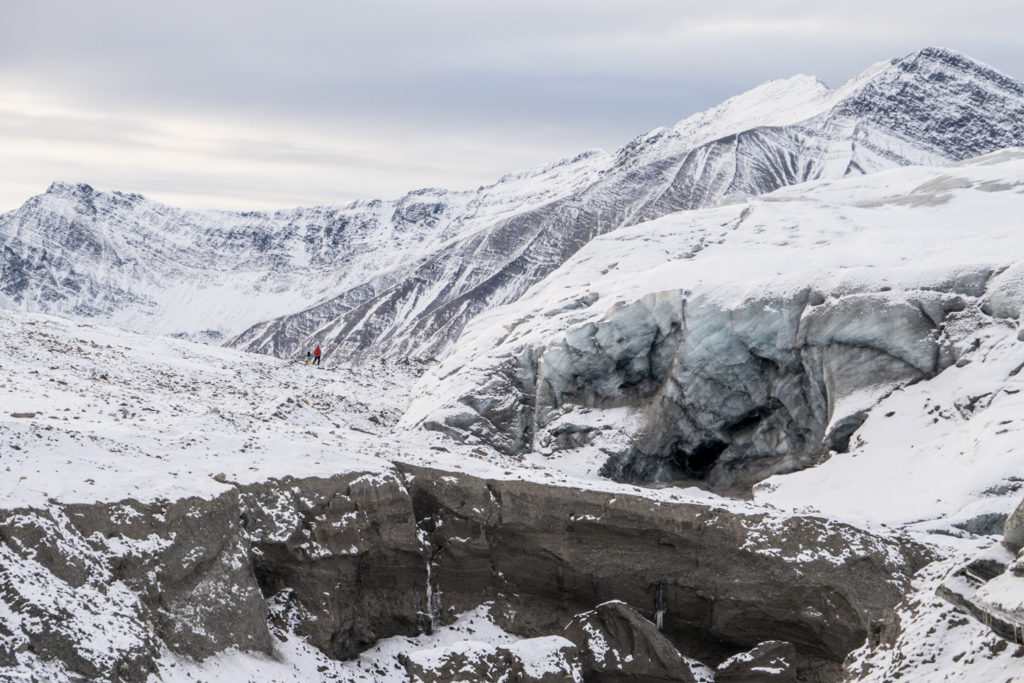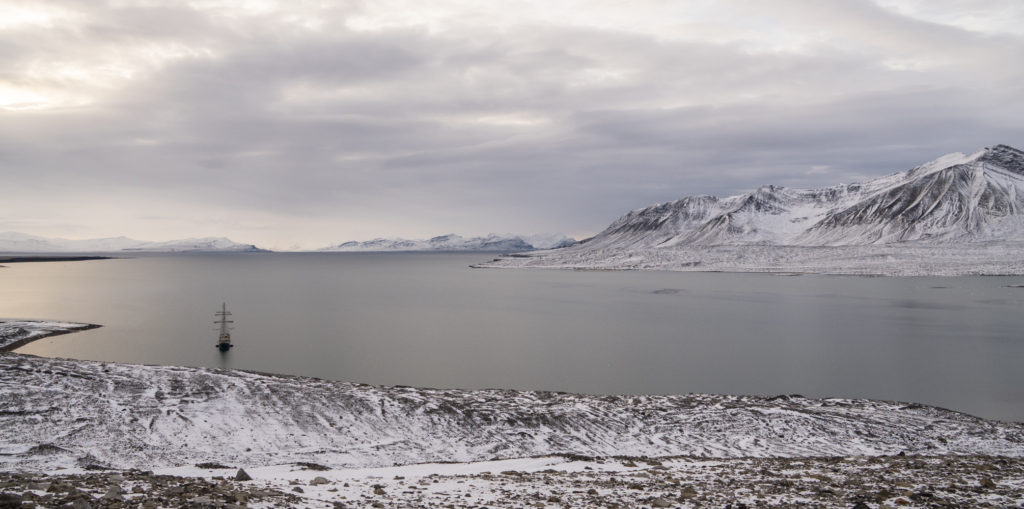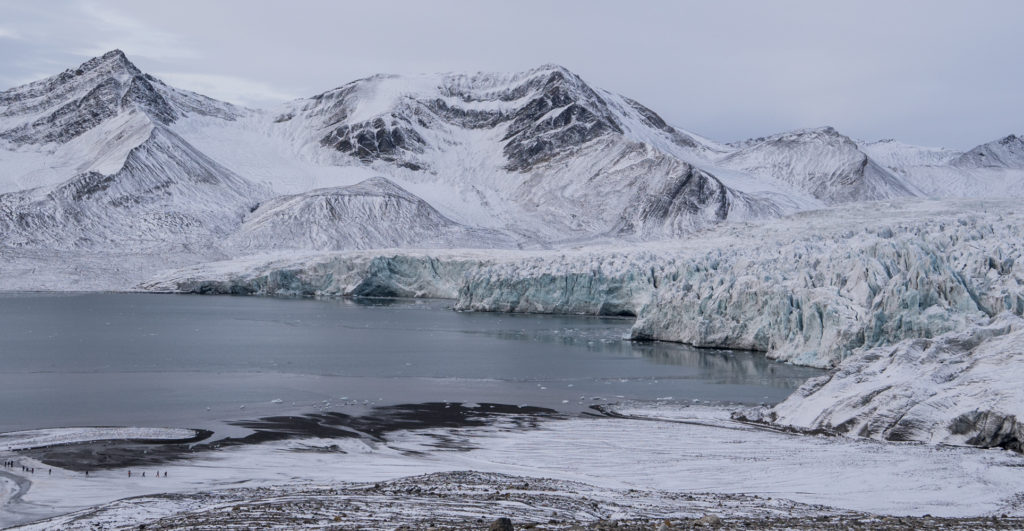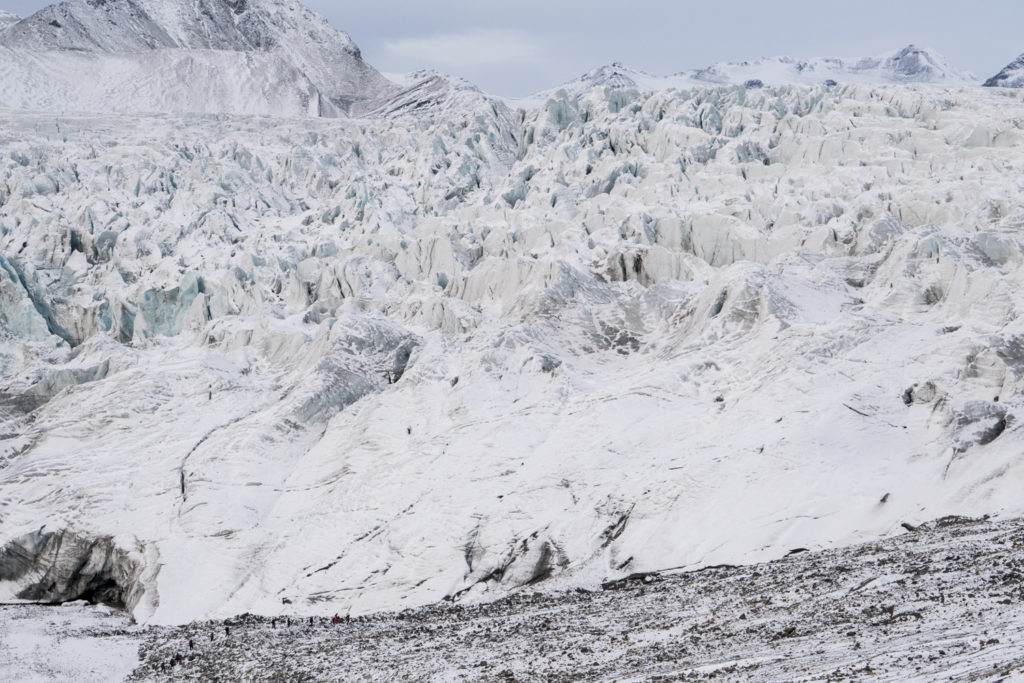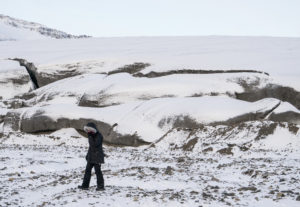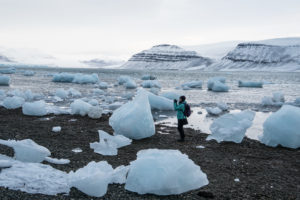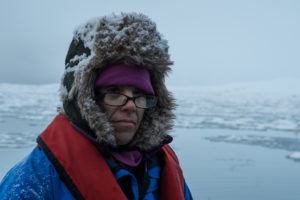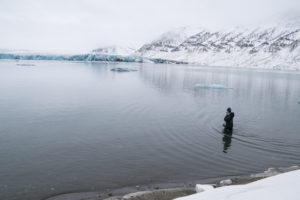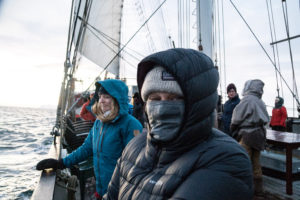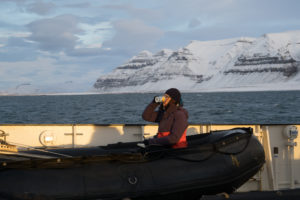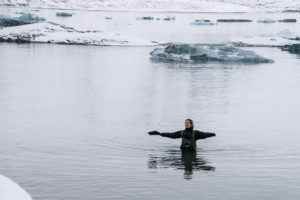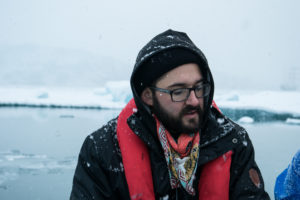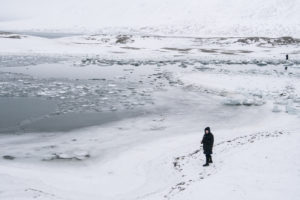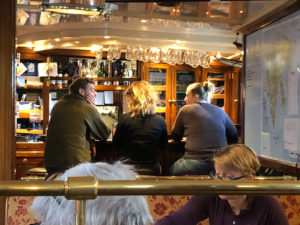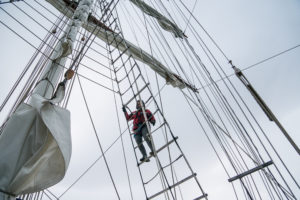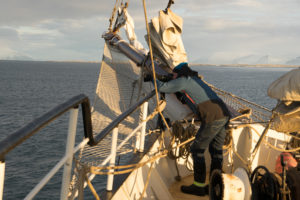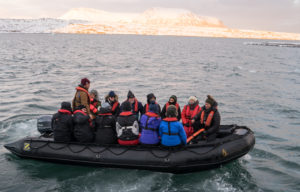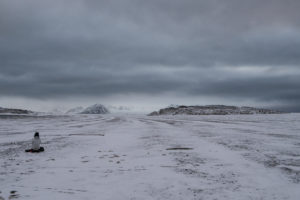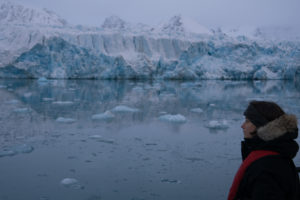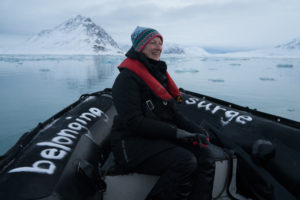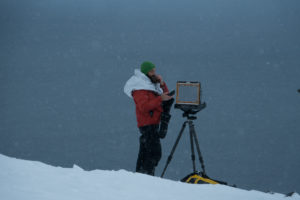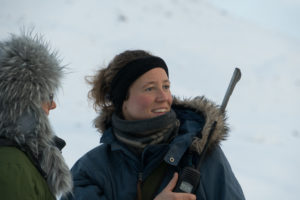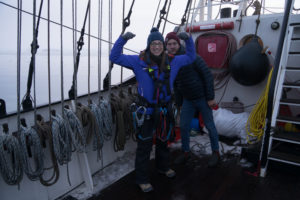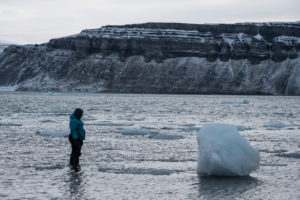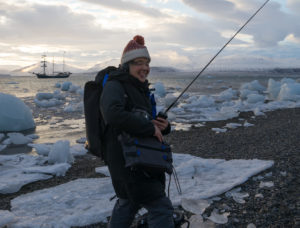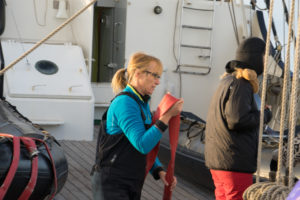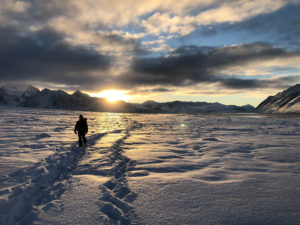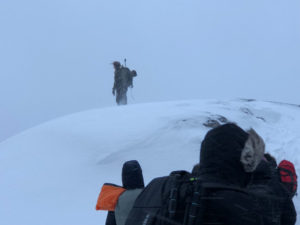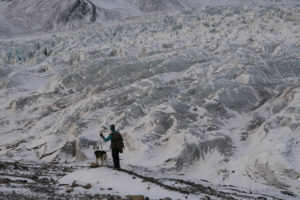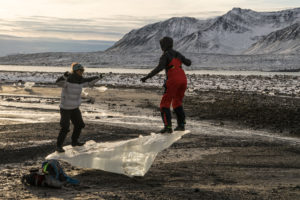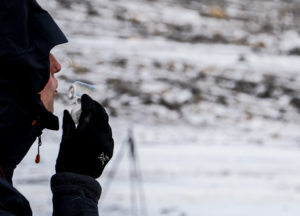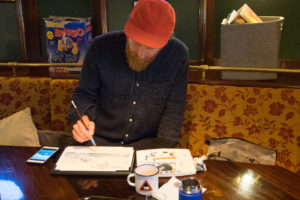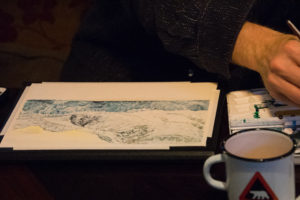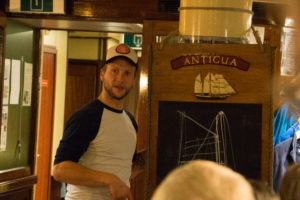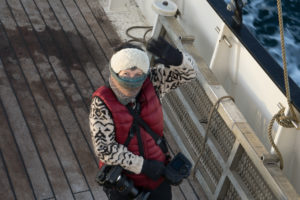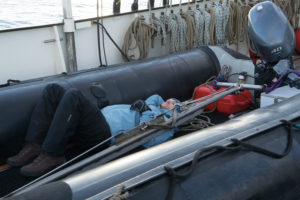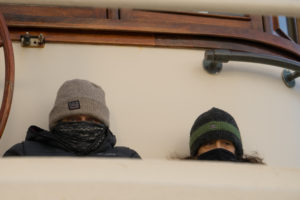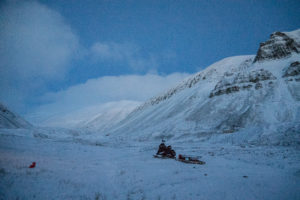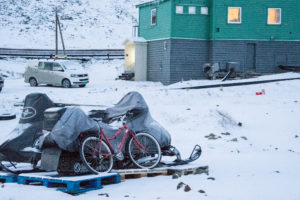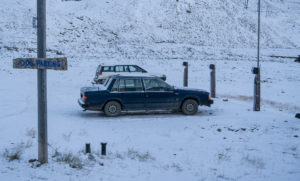Setting sails
2 October – Ymerbukta
We left port yesterday afternoon with the motor but put up the sails quickly and fairly flew across the fjord. We helped with the sails – a token effort by the guests. Ropes everywhere, sails pulled up front to back and staysail in the bow. The wind was high and rough and almost everyone felt it. I did well outside but inside was pretty queasy. Eating helped and the food was good. I didn’t eat a lot and went to bed almost immediately.
Someone pounded on the door to say the aurora was visible. Lena (my cabinmate) and I got dressed and went out but there was little activity and after 10 minutes I went back to bed. By the time we went up for the aurora the crew had pulled down the sails and dropped anchor in a quiet arm of the fjord with a wall to protect us from the wind bombing out of the north. The water was calm, and the boat rocked gently for the night.
We did a landing this morning and a hike up the glacier edge. The grays and greens and blues are satisfying and intense. The glacier was growling and grumbling. Thunder came from within the glacier, massive rolling peals as it shifted and creaked into a new position. It calved audibly but we couldn’t see it from where we were, though we watched the wave from the calved iceberg cross the bay and wash up onto the shore.
The landscape is wide open and at the same time constrained within the walls of glaciers and the surrounding mountains. The beach is gravel and sand with gently lapping water. There is a tide, but it seems very small. Black guillemots in their winter attire were on the water and a few purple sandpipers along the beach. Two seals followed us when we first landed; they barked at us.
And the rest of the crew
The people, part 3
Last but not least, this rounds out the cast. Twenty-eight residents and 11 crew members set sail for two weeks on the waters of the North Atlantic. Tight quarters, snowy weather, and a boatful of ideas make for lively times.
There are no bit parts
People, part 2
As each person on this trip takes shape in my photos, I realize that they all held leading roles as stars of their own Arctic show.
The characters take the stage
A few characters
As a field biologist, I often said there was a reason I worked alone in the woods for so many years. Not quite a misanthrope, I don’t suffer fools lightly – though I spent many years as a fool myself, and fooling myself. Two weeks on a ship full of people from which your only escape is to get into a Zodiac with the same people and spend time on shore again with those same people, oh, that took some mental wrangling.
In the end, the people were as much a part of the success of this trip as the location. For someone who rarely takes photos of people, this group enthralled me. The crew each knew enough for twenty people. The crew and residents both were not diverse but rather were infinite in their stories, their articulation via a chosen medium, their creativity, and openness to the possibilities of art, design, expression, and life.
In the order taken
Dog parking at the end of the trail
When the season’s over
There are fewer than five miles of roads on an island more than 500 miles from the nearest landmass. At the end of the season, ride your snowmobile to the edge of the remaining snow and walk away. When you return in the fall, it will be there. Maybe you got close enough to town to store your bike with the snow machine. Just lean it against the snowmobile. It’s fine.
Stopping in for a beer at the Coal Miner’s? Great. Park your dogs out front. Take off your shoes and leave your gun at the door.
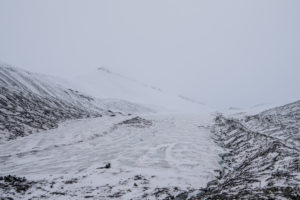
A lone snowmobile stands at glacier’s edge and away from the pack conveniently camouflaged as rocks (lower left)

